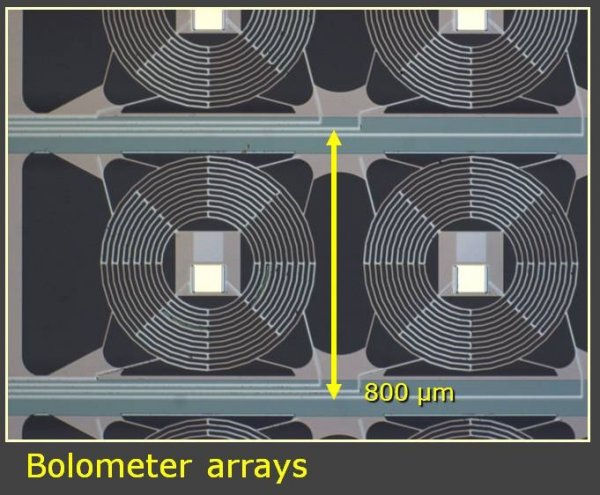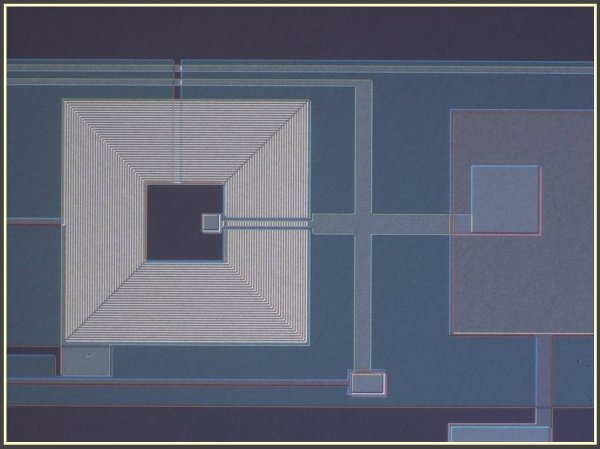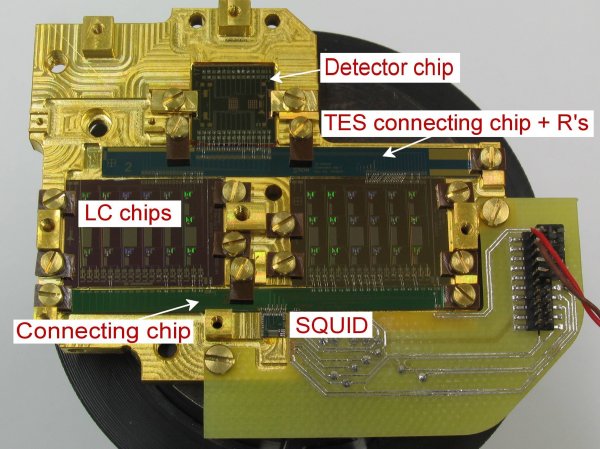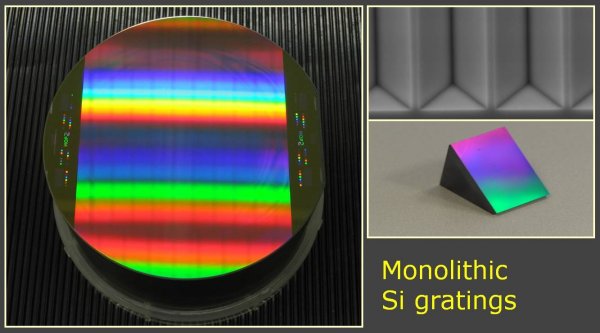




The Litho section of the Instrument science group develops fabrication methods for sensors to be applied in future space-based astronomy or atmospheric research. The present focus is on the development and production of:
- Arrays of bolometers based on superconducting transition edge sensors for sub-mm/infrared detection. Processes include SiN micromachining and thin film metal deposition and patterning. The goal is a contribution to the SAFARI instrument.
- High quality superconducting capacitors and inductors for noise blocking filters, which form essential components in frequency domain multiplexing, used for the read-out of bolometer and microcalorimeter arrays.
- Arrays of Kinetic Inductance Detectors based on microwave resonators and antenna structures for the detection of THz radiation.
- Immersed grating structures, etched in silicon substrates, for compact high resolution optical instruments for remote sensing, e.g. TROPOMI.
- Arrays of X-ray microcalorimeters based on superconducting transition edge sensors. The technology is similar to bolometer fabrication, but includes also the production of low-heat capacity overhanging Bi absorbers.
In the past the Litho section has been involved in the development of:
- Transmission gratings.
- Superconducting tunnel junctions for X-ray spectroscopy.
- High-temperature superconductor bolometers for far-infrared detection.
- Microstrip gas detectors for high energy physics experiments and synchrotron applications.
The section microstructures also carries out research and fabrication work for external parties.
For information please contact: dr. M.P. Bruijn


